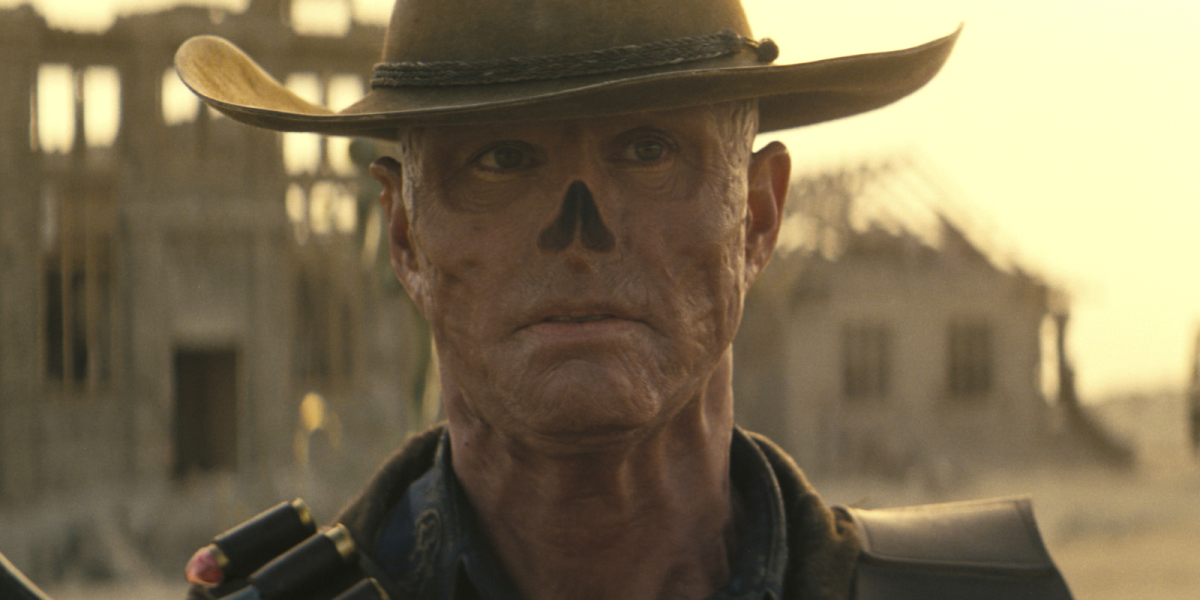Warning: The following contains spoilers for Fallout Season 1.
Ghouls feature prominently in Fallout Season 1 – so what exactly is a ghoul? And why are some of them so feral in Season 1?
Related: Where Do the Fallout Games Take Place? Answered
What Is a Ghoul in the Fallout Universe?
In Fallout canon, a ghoul is a person (or animal) mutated by exposure to a hefty dose of radiation. This transformation process is known as “ghoulification.” Ghoulification causes severe disfiguration – Cooper Howard/The Ghoul’s noseless, hairless, burnt-skinned appearance is a common look – and sterility. On the plus side, ghouls aren’t phased by radiation and have incredibly long lifespans. Many of the ghouls in the Fallout games and Prime Video show are survivors of the Great War, which happened over 200 years before Fallout Season 1. Others are the result of pre-war experimentation, or are the product of post-war nuclear activity (see: Lucy’s mother, Rose).
Related: Is Prime Video’s Fallout Getting a Season 2?
Fallout lore features several different ghoul variants, aside from the standard necrotic post-human strain spotlighted in the show. They include glowing ones (bioluminescent thanks to the amount of radiation they absorbed) and marked men (fatally wounded folks kept alive by the background radiation of their home, the Divide). But, regardless of their exact nature, all ghouls retain their pre-transformation intellect and personality, unless they go feral (more on that later). This doesn’t stop the wider Wasteland community from treating them as second-class citizens, however.
Why Do Some Ghouls Turn Feral?
At least some of the prejudice towards ghouls is due to fears they’ll turn feral. So, why does this happen? Fallout canon doesn’t offer a concrete answer, however, it’s linked to degeneration of the brain. The games and show also present several factors that increase the chances of feralization. Ghouls who forgo food and water – relying solely on their quasi-immortality to survive – often go feral. Spending too much time alone is likewise a surefire way to accelerate the feralization process. It’s also possible that feralization will inevitably affect all ghouls, given the intense amount of radiation in their systems.
Related: Fallout Season 1’s Ending, Explained
No matter what the exact cause (or causes), feralization always manifests in the same way. Feral ghouls lose their higher brain function, becoming hostile and driven entirely by appetite. And considering ghouls can eat stuff non-ghouls would balk at – such as raw human flesh – this makes their feral brethren highly dangerous. There’s currently no known cure for feralization, although there are chems (drugs) that can keep its effects at bay. We see the Ghoul glugging down said chems on more than one occasion in Fallout Season 1.
Fallout Season 1 is now streaming on Prime Video.






Published: Apr 15, 2024 07:18 am